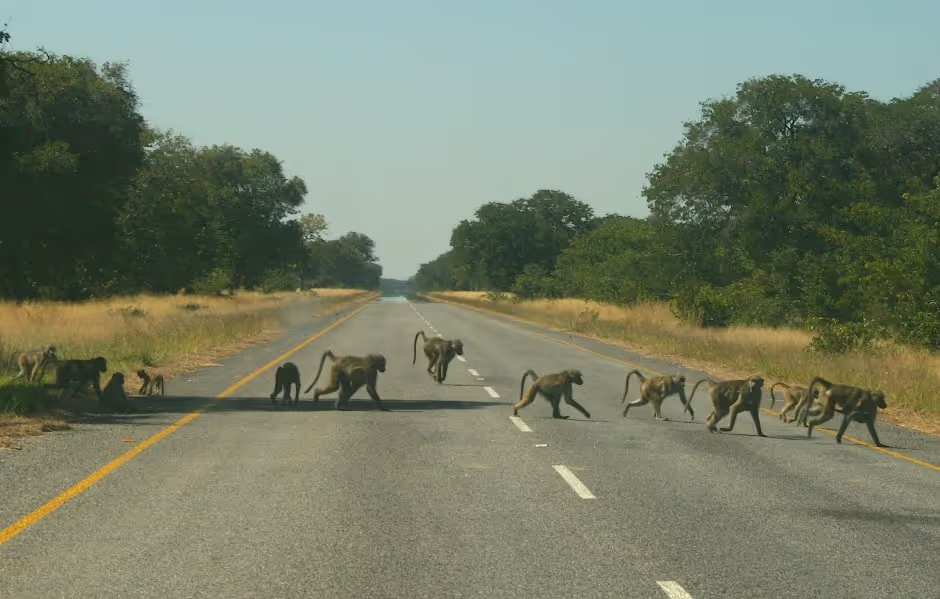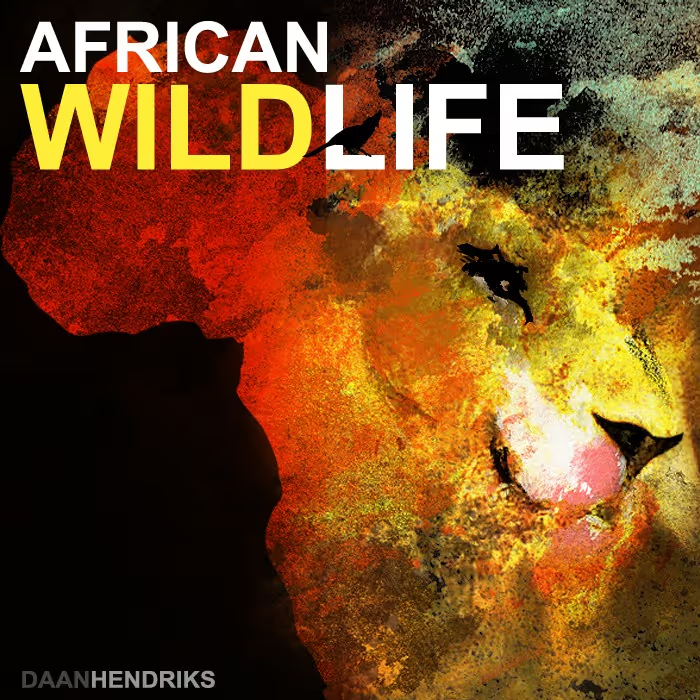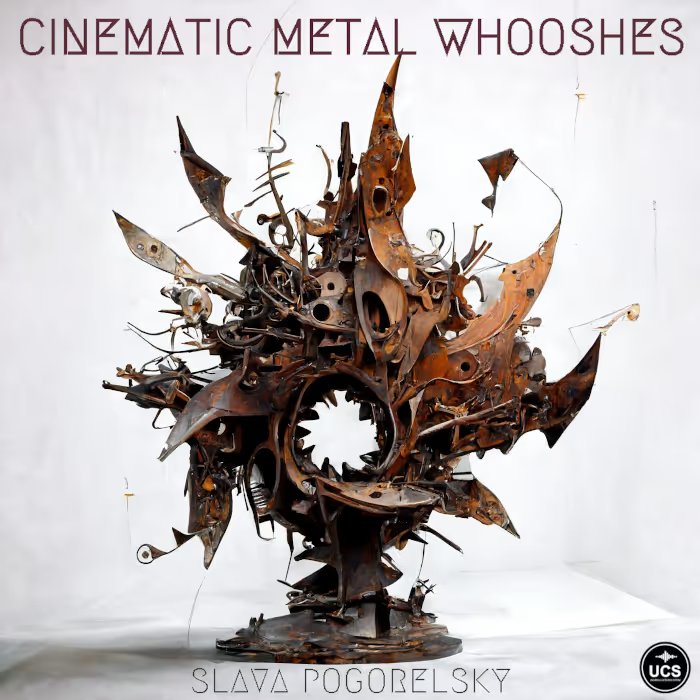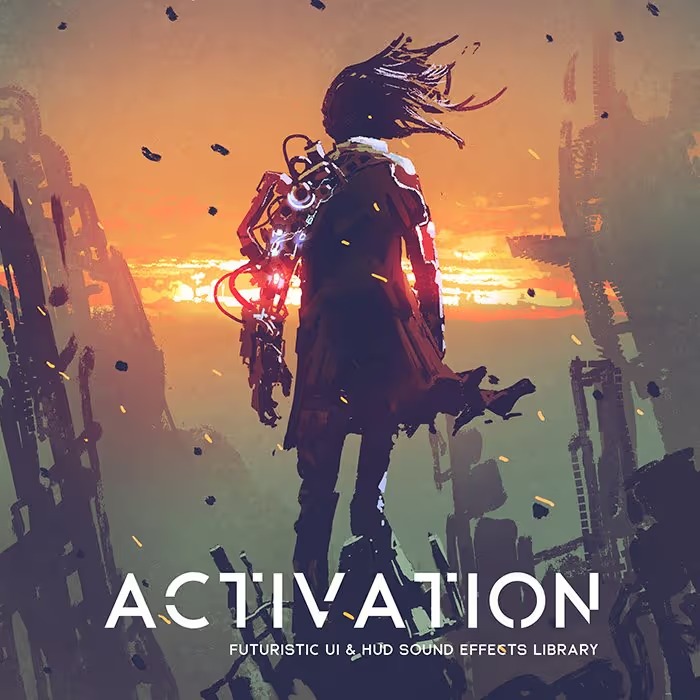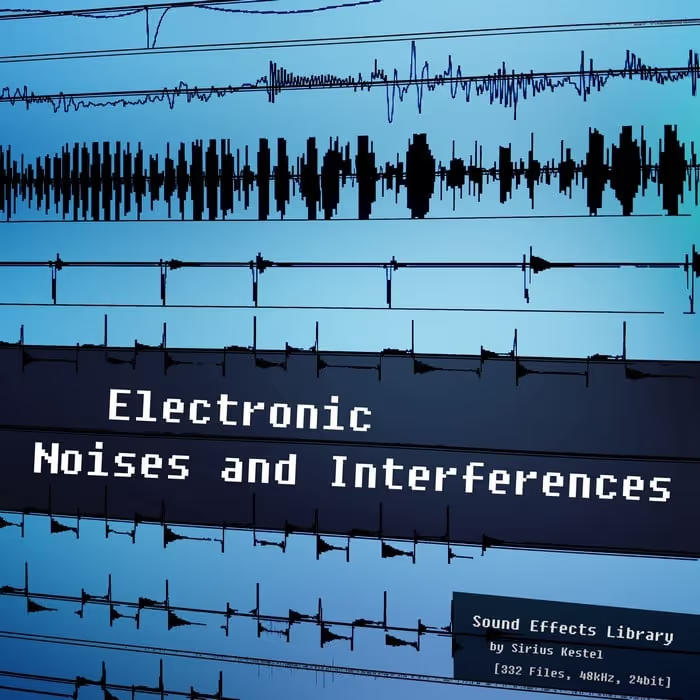It features everything from elephants, baboons, jackals, lions, rhinos, buffaloes, hippos, impalas, zebras, bats and hyenas, to ambiences, insects and 45 (!) species of birds.
Recorded in Zimbabwe, Botswana, Namibia and South Africa, creating the library was a massive undertaking – and in this special A Sound Effect interview, Daan Hendriks shares the stories behind these grand, dramatic – and sometimes funny – recordings:
Hi Daan, please introduce yourself and your new African Wildlife library:
I’m an audio designer and wildlife sound recordist. As an audio designer, I work freelance in the games industry. Wildlife sound recording is something I do both for pleasure and to capture material to design sounds with.
For the African Wildlife library, I spent 4 months in various countries of Southern Africa – Zimbabwe, Botswana, Namibia and South Africa. The first two months I was permanently based in a private game reserve in Zimbabwe. Besides sound recording, I spent my time there studying wildlife and nature through a professional safari guiding course.
I obtained an official field guide qualification by the end of the course and used the knowledge gained during the subsequent five weeks, when I was driving through, camping and doing more recording in wilderness areas of Botswana and Namibia. The final three weeks I drove through South Africa, but not much recording was done there as I was in comparatively more urbanised areas.
The resulting library is a curated collection from all the material I recorded, which in total was about 500GB. The selection and editing process for various reasons took way more time than the actual recording, yet I thoroughly enjoyed it as well as it meant I was continuously being transported back to my time in Africa.
You’ve captured some very rare material for this library. What are some of the animals and ambiences featured in the library?
Perhaps when we as Westerners imagine the sounds of African wildlife we first and foremost think of lions growling, or some other vicious and dangerous sound. And while I love a good roar, the sounds of the bush are way more varied and often surprisingly relaxing, odd or funny; in the same time, plenty of dramatic and sometimes spooky calls can be heard when out camping in Africa.
While I love a good roar, the sounds of the bush are way more varied and often surprisingly relaxing, odd or funny; in the same time, plenty of dramatic and sometimes spooky calls can be heard
The library contains a wide range of mammal sounds, with a total of eleven species: elephant, hyena, jackal, hippo, baboon, bat, lion, zebra, rhino, buffalo and impala. Some are more vocal or have a larger repertoire than others, and this is reflected in the library.
There’s also a large selection of bird sounds, totalling 46 unique species which have all been meticulously identified and named in the metadata. As much as I love the drama that mammal sounds can provide, I think the bird calls are my favourite.
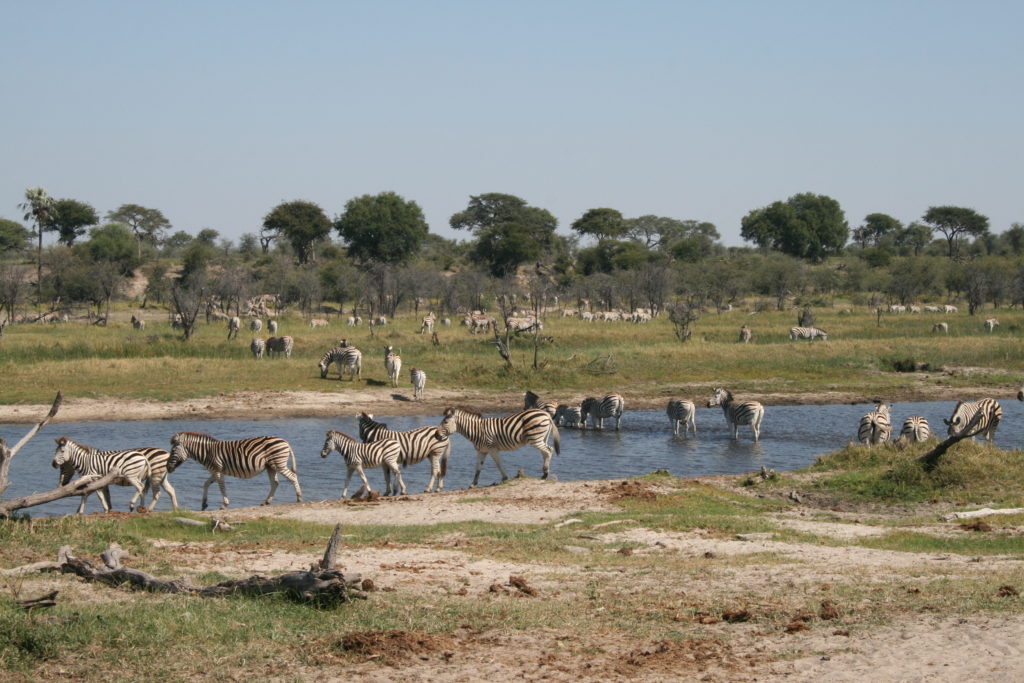
From an ambience point of view, it’s important to remember that I didn’t record in the jungles of Central Africa. The semi-deserts and savanna areas of Southern Africa are sonically relatively sparse in the time of the year that I visited, which makes in my opinion for a nicely balanced soundscape where species don’t compete as much for a spot in the spectrum as in a rainforest.
Mammals included (11 species) – 162 files, 1hr 1minute
African Bush Elephant, Bat, Black-Backed Jackal, Black Rhino, Cape Buffalo, Chacma Baboon, Common Hippopotamus, Impala, Lion, Plains Zebra, Spotted Hyena.
Birds (45 species) – 165 files, 39 minutes
African Barred Owlet, African Fish Eagle, African Grey Hornbill, African Swamphen, Arrow Marked Babbler, Blacksmith Lapwing, Cape Turtle Dove, Collared Palm Thrush, Dark Capped Bulbul, Double Banded Sandgrouse, Egyptian Goose, Emerald Spotted Wood Dove, Fiery Necked Nightjar, Fork Tailed Drongo, Giant Kingfisher, Great Egret, Green Woodhoopoe, Grey Go Away Bird, Hadeda Ibis, Helmeted Guineafowl, Lesser Striped Swallow, Lilac Breasted Roller, Little Grebe, Meyers’s Parrot, Natal Spurfowl, Northern Black Korhaan, Pearl Spotted Owlet, Pied Crow, Red Billed Spurfowl, Red Eyed Dove, Senegal Coucal, Sociable Weaver, Southern Ground Hornbill, Southern Masked Weaver, Southern Red Billed Hornbill, Swainson’s Spurfowl, Three Banded Courser, Tropical Boubou, Verreaux’s Eagle Owl, Water Thick Knee, Western Barn Owl, White Fronted Bee Eater, White Browed Robin-Chat, White Browed Sparrow-Weaver, Yellow Bellied Greenbul
Ambience (5 locations) – 24 files, 50 minutes
Bush, Lake, Muddy Clearing, Open Field, River
Insects – 12 files, 5 minutes
Bees, crickets, grasshoppers and wasps
It must have taken a lot of planning to record these sounds – how did you go about it, and what was your recording setup?
As the four months I spent in total were divided between study and travel, the approach and planning differed between these two stages.
For the self-drive safari and camping part, by far most of the planning went into logistics – figuring out the route, where to sleep, supplies; some parts of the route meant not coming across a shop or fuel station for 5 days.
To keep my gear safe, I was loaned a big heavy cage, used normally as a leopard trap, to put my equipment in
From a recording point of view, I needed time and luck. I would sometimes record from the car during daytime, but most sounds were captured at night. After setting up camp for the night, I would leave my pair of Sennheiser MKH8040s on a stand on top of the car, and monitor from the tent until I fell asleep. I’d then check later what I’d captured that night.
During the first two months in Zimbabwe, when I was studying for my field guide qualification, I had a lot of help from people who worked at the reserve. Because I got to know the reserve well and most importantly could rely on expert information from my guiding instructor and others, I was able to identify a few locations where I likely would get interesting sounds.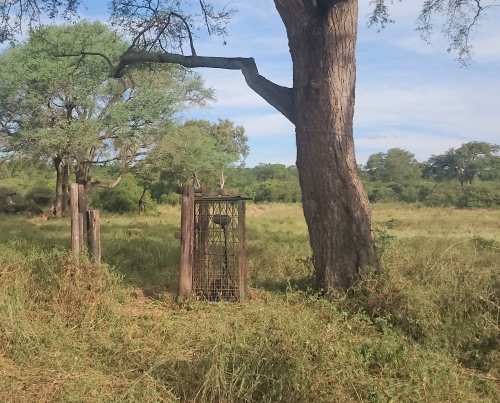
To keep my gear safe, I was loaned a big heavy cage, used normally as a leopard trap, to put my equipment in. This cage would then be transported to my chosen locations inside the reserve and I’d simply let the recorder run for sessions up to 32 hours at a time, coming back later to pick up my gear.
Overall, my recording setup was primarily the aforementioned MKH8040 pair in ORTF, running through a Sound Devices USBPre2 preamp into a Tascam DR680 recorder. I also fairly regularly used my Sony D100, and very occasionally a Telinga parabola (with one MKH8040 as mic).
How did you manage to get close to the animals without disturbing them? And what sort of safety precautions did you take?
While I got many close-up recordings, I didn’t personally get too close, and I tried not interrupting the wildlife if I could help it. I’d sometimes record from the car during a game drive, if you operate the vehicle delicately enough you can often get pretty close to wildlife without disturbing them. But the reality is that a lot of the time the animals you are observing are silent, or there are other factors prohibiting a good recording.
So, as described above, in Zimbabwe I’d leave the microphones out inside a cage and I wouldn’t be anywhere near for a long period of time. So animals would naturally eventually get close, and sometimes get vocal – a combination of luck, time and some informed decisions on location.
While camping in Botswana in particular, animals do visit your campsite so having the microphones on top of the car throughout the night often resulted in close recordings. There were also occasions where for instance I would be having lunch at my camp site and an elephant would visit to eat from a nearby shrub or tree. In some of these cases I was able to anticipate which direction the elephant would head to and leave a microphone hidden in the bush nearby to get very close up recordings.
Personal safety precautions were always a case of common sense. Don’t leave food out or inside the tent, for instance. When it gets dark, you build a fire – this keeps most wildlife at bay, except honey badgers, who completely couldn’t care less about your stupid fire. Sadly and ironically, while honey badgers were the mammals I got closest to due to their fearless nature (which contrasted nicely with my initial fearful reaction to their sudden presence while having dinner), I haven’t been able to record them this time.
People usually think about lions or other cats as danger but a far more common risk is to get ambushed by a grumpy buffalo or startling an elephant
Another common sense safety precaution is that you absolutely do not go for a walk or stroll into the bush (unless with a professional guide/tracker who is armed, but that is a whole different approach). People usually think about lions or other cats as danger but a far more common risk is to get ambushed by a grumpy buffalo or startling an elephant.
Especially in Botswana you’d run into elephants all the time, both while in the car doing game drives or at your campsite. These animals are beautiful but also very big and strong – and they know it, so you really want to make sure they don’t get pissed off with you. It was always important to stay quiet and don’t make sudden movements, while keeping observing their behaviour for any warning signals. They are generally very relaxed however and not too bothered about your presence.
I can imagine recording on the African savannah posing some unique challenges – what were some of those, and how did you overcome them?
Apart from the safety concerns mentioned above, one of the bigger challenges when driving, camping and recording in Botswana and Namibia was electricity, as there was none. I used a transformer in the cigarette lighter charger of the car to charge the big USB batteries for the recorder while driving, which mostly worked pretty well, as long as I kept driving for many hours every day.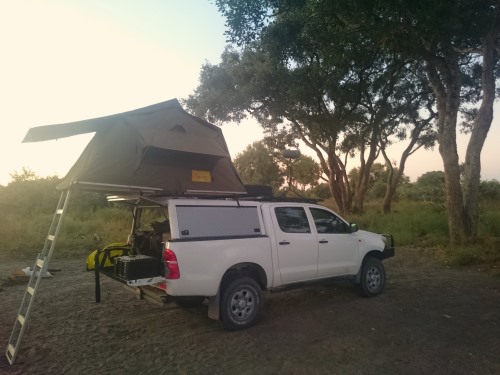
The other thing that was a continuous presence was sand – everything got pretty sandy inside the car, it was just impossible to avoid, so keeping the equipment clean took extra care.
Overall the whole process was pretty demanding for my equipment and especially the Tascam recorder unfortunately developed some occasional problems. I did lose some recordings because of this. Luckily I could use the D100’s optical input together with my preamp as a more solid backup recording solution.
I also lost recording opportunities due to having not been able to fully charge the batteries for an all-night session sometimes. Next time I intend to also use solar power to try and combat the electricity issues.
Lastly, one unique and surprising challenge of the reserve in Zimbabwe was that it was only 15km from the Victoria Falls, the world’s biggest waterfalls. The continuous movement of this incredibly large mass of water meant there was a steady low frequency rumble in the recordings which especially at night could get pretty loud. I had to fix this in the editing stage. The rumble was in some areas so intense that it made me wonder if it affected the elephants, as they rely on distant communication signals that are within the subharmonic range.
Any experiences that particularly stand out from creating the library?
I distinctly remember having to clean the recording cage in Zimbabwe from baboon shit after having it left out under a tree they roost in all night.
I could hear a lion peacefully purring like a massive domestic cat at what sounded like no more than a hundred meters from where I was
While setting up camp at one site in Botswana I could hear a lion peacefully purring like a massive domestic cat at what sounded like no more than a hundred meters from where I was. Of course he was nowhere to be seen as the bush was thick and still green at this time of year. His proximity combined with my tiredness after 11hrs of difficult 4×4 driving, the nearby hippo-filled river plus seeing hyena eyes light up in the darkness at the perimeter of my camp meant that this was the only night I retired to bed out of nervousness. Lions could also often be heard roaring contact calls just before dawn, sometimes loud enough to wake me up – a truly awesome powerful sound.
I very clearly recall the stress I felt when I had to do my first river crossing in Botswana, through a river with crocs sunning on either side of the water and with hippos audibly not too far away, and the subsequent relief when a local happened past who could show me which route to take through the water without trashing the car. Another local had previously helpfully told me to drive ‘left from the big tree in the water’, only to notice there were two big trees when I got to the river.
I remember being surrounded by a grazing and peacefully mooing and grunting buffalo herd in an open safari vehicle during the guiding course in Zimbabwe, at night, but not daring to open my bag with recording equipment because the sound of me getting my gear ready would disturb the moment. With a really heavy heart I didn’t record this great and unique sounding moment. I did manage to get some lovely buffalo herd grazing and feeding sounds at a later stage however using the leopard cage.
I recall packing up my mics only half an hour after having set them up at the perimeter of a sleep out in the open air with my fellow safari guide students because one of them was a heavy snorer, ruining the recording. No sooner than a few minutes after taking down the gear we heard a leopard doing its distinct ‘sawing’ contact call at very close proximity from where we slept. It’s the only time I heard a leopard and have yet to see one in the wild, let alone make a recording of it.
What are some of your personal favorite sounds in the library?
I got many favourites, I’m just in love with the sounds that African wildlife produce. I really like the diverse sound palette of elephants, they are capable of some utterly dramatic screams and growls but also funny sounds like lengthy blubbering farts and gassy, burping breaths – I’ve recorded a pretty wide range of all that they are capable of.
I really like the diverse sound palette of elephants, they are capable of some utterly dramatic screams and growls but also funny sounds like lengthy blubbering farts and gassy, burping breaths
I also love the melancholic howling of hyenas and jackals, some arid locations where I recorded were completely still in terms of background sound, making for a great soundstage when these mammals started calling, sometimes really close to the mics. Of course the big, loud guffawing of hippos is pretty funny. And the surprisingly weird hee-hawing donkey like calls of zebras in panic are also a favourite.
There’s many bird sounds that I really like, just because there’s so much variation amongst them. Melodic song birds such as the Whitebrowed Robin-Chat, odd, mocking laughter-like calls from the Grey Go-Away-Bird, some great screeching by a Western Barn Owl that sat right next to the mics for some minutes, the many variants of Spurfowl that always manage to sound like some kind of melodious chickens, the peaceful purring of a pair of African Barred Owlets just before dawn, the strangle nasal calls of a Lesser Striped Swallow – I could go on, there’s a lot of bird sounds that I recorded that I really came to love.
What’s next for you – any more indie SFX libraries on the way?
I’m working on more wildlife related libraries, and likely will release a few smaller collections in the relative short term. I’m also in the planning phase for more wildlife sound recording in Africa, there is so much more to record down there, and I just love being in African nature. It sounds cheesy but I’ve never felt anywhere as much at home as when I was there.
Camping and being out in African nature is one of the most relaxing and rewarding experiences I’ve had
While some of my anecdotes mentioned above maybe draw a picture of a stressful and difficult experience, that would be far from the truth. Camping and being out in African nature is one of the most relaxing and rewarding experiences I’ve had, so I definitely want to do this many more times in the years to come. Though I did a field guide course before I did a self-drive safari, this was just because I was interested in gaining more knowledge and context which would aid me with my recordings and overall experience. But one can easily do a self-drive trip through the Southern African nature without having studied for a guide qualification, so I can definitely recommend it to anyone to go and try it for themselves.
Get the full library below:

